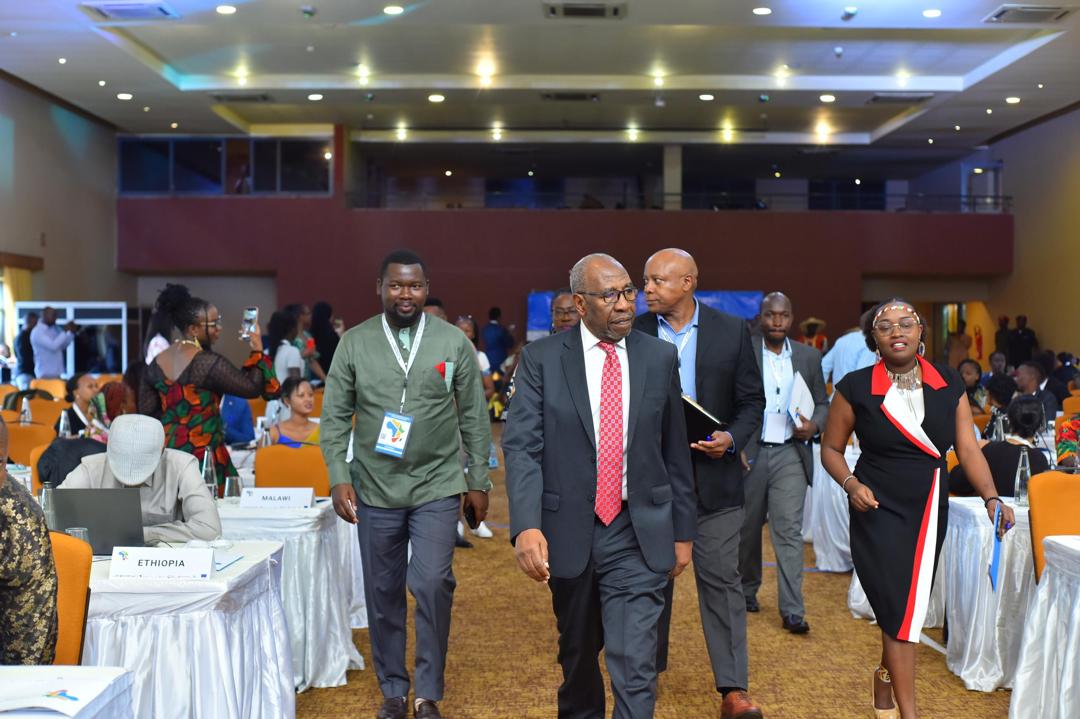Prime
Why Archbishop Lwanga will be buried inside Rubaga Church

An usher shows the faithful the spot where the archbishop will be laid to rest inside Rubaga Cathedral on April 08, 2021. PHOTO/STEVEN OTAGE.
What you need to know:
- There are, however, exceptional cases where top clerics opt to be interred elsewhere.
Yesterday, during morning hours, there was a beehive of activity both within and outside Rubaga Cathedral, the parent cathedral of the Roman Catholic Archdiocese of Kampala.
Outside the cathedral, workers were sweeping and mopping the porch.
Others were erecting marquees, all in preparation for the upcoming burial of the late Archbishop of of Kampala, Cyprian Kizito Lwanga.
Lwanga died on Saturday morning, aged 68, and a postmortem report released on Monday revealed that he succumbed to heart attack induced by a blood clot.
Inside the church section dubbed Uganda Martyrs Corner, a series of activities, including grave construction, were at full throttle. This crypt, a final resting place for already two other bishops, is where the remains of Lwanga will be interred tomorrow.
At about 11am yesterday, Uganda Funeral Services (UFS) staff hollowed out the floor to build a modern grave.
This designated burial location is inside Rubaga Cathedral, on the right-hand side, more precisely, between the graves of Joseph Kiwanuka and Bishop Edward Michaud.
Kiwanuka served as the archbishop of Rubaga from 1961 until his death in 1966, while Bishop Michaud served as the apostolic vicar in Tabora in Tanzania before being transferred to Uganda in 1932. He died in 1945.
UFS staff at the site declined to discuss the gravesite construction. A grave digger, speaking on condition of anonymity for lack of authority to speak on the matter, said opening the burial place for Archbishop Lwanga pumped in him mixed feelings.
“As much as it is an honor to be working on the late Dr Lwanga’s grave, I find it also challenging to work on his final resting place because at the back of my mind, I know we shall never see him again. It is a bitter-sweet feeling,” one of the grave diggers said.
Why burial in cathedral
Mr George William Katende, a guide and receptionist working at Rubaga Cathedral, told Daily Monitor yesterday that bishops who die either while in active service or during retirement are buried inside cathedrals.
“That is the tradition of the Catholic Church,” Mr Katende said.
He added that when a deceased bishop, for different reasons, cannot be buried inside the cathedral, a space is then designated for them inside other places of prayer and worship, including chapels.
In an article published on April 7, 2020, Kenya’s Standard newspaper reported that the practice of burying prelates in cathedrals where they served originated in 787AD when the “Second Council of Nicaea, a Catholic sitting, decreed all new churches would be built with relics of saints placed inside altars”.
The decree, the paper reported, lasted for a millennium after which it became desirable, and in Catholic Church tradition, the “concept of building crypts was drawn from the persecution of Christians and the believers who were buried in these caves when they died”.
In the hilly Rubaga suburb of Kampala, the practice will come alive again when hundreds of faithful are expected to throng Rubaga Cathedral to escort Lwanga on his final journey to the basement of the church where his throne was the cathedral.
He had served as bishop of Kasana-Luweero Diocese from 1996 to 2006, before his appointment as Kampala archbishop in 2006.
There are, however, exceptional cases where top clerics opt to be interred elsewhere. For instance, late Emmanuel Cardinal Nsubuga stated in his will that he should be buried at the Bakateyamba Home of the Elderly and Disabled in Nalukolongo near Nateete, a city outskirt. Nsubuga was consecrated archbishop on October 10, 1966 following his appointment by Pope Paul VI.
“So, in circumstances such as this where a bishop states in his will that he wants to be buried in a specific location upon his death, those wishes are respected,” Mr Katende said.
About bishops buried inside Rubaga Cathedral
Joseph Kiwanuka. He was the first African Bishop South of Sahara (Sub-Saharan Africa). He was born in 1899 at Nakirebe (located in Mpigi District) and baptised in the same year in Rubaga. Later, Kiwanuka was ordained a priest in 1929 and consecrated bishop in 1939. He became archbishop of Rubuga in 1961. He died on February 22, 1966.
Bishop Edward Michaud. Born in 1884, he served as the apostolic vicar in Tabora in Tanzania before being transferred to Uganda in 1932. He died on June 18, 1945.
Other revered burial grounds
Just outside Rubaga Cathedral is another easily noticeable gravesite. According to Mr Katende, this is the final resting place for priests who have previously worked in different capacities in the Catholic Church, including Rubaga Cathedral.
“When a priest dies, they are not usually taken back to their ancestral home, but rather laid to rest in a cemetery or in a location near or attached to the cathedral,” he said.




